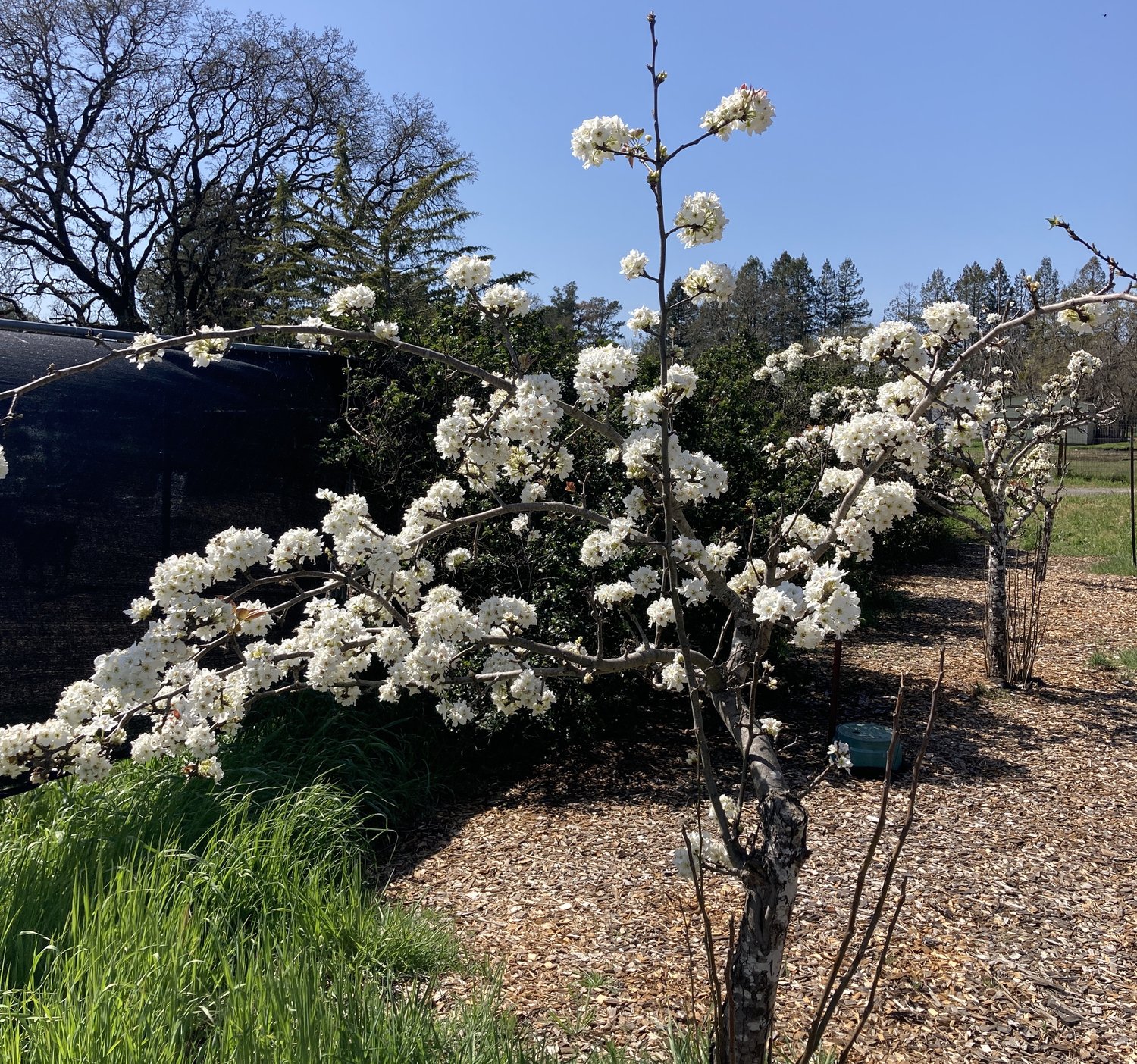Originally published in the Climate Psychology Alliance-North America blog
Spring has sprung early again this year in Northern California. And with temperatures at a record setting 90 degrees last week, it appears to be ending early too. It took my New York body a long time to adjust to California’s Mediterranean climate when I first arrived here. Despite cognitively knowing otherwise, for years my sensory system continued to expect dull brown winters and vivid green summers. But in California, winter is the greenest time of the year. Dry grasses burst into life with the first rains, and the world is awash in new growth long before the appearance of springtime buds. By the time I adapted to anticipate the wet green of winter, California was already changing; the dry season growing steadily longer with each passing year.
Spring brings a burst of delight that seems to reach everywhere. Flowers blossom in abundance, birds and bees and butterflies flit between them. For a brief moment, the world awakes into a fertile wonderland. It was once so easy to enjoy the bountiful beauty of spring. These days, I set out intending to embrace each flower with mindful gratitude. But the experience is tempered by the knowledge that a long, overly hot and dry spell is approaching, and that the last of our precious rains may already have fallen.

It is increasingly difficult to fully enjoy spring when it arrives so early – the seasons are once again out of synch with my embodied expectations, and there is a constant nagging sense of not-right-ness that accompanies every bloom. Locally, we have an Apple Blossom Festival every year in late April. I am sure that when the festival was created, in 1946, it aligned with the appearance of the blossoms it celebrates. By the time I arrived here, it always seemed a couple of weeks off. This year, apple trees burst into bloom by the second week in March, and have long since passed their peak. It is near impossible to look at them without ruminating on how out of rhythm they have become.
People all over the world have been noticing and naming the change to the rhythm of the seasons, how oddly unsettling it feels to have cycles we have known in our bones for generations become increasingly scattered and unpredictable. Many of us struggle with this impact, and I am particularly concerned about how changes to the natural cycle are affecting my clients – young children with complex trauma histories.
As clinicians, many of us are familiar with the “anniversary effect” – the increased intensity of grief and trauma symptoms as we near the anniversary of the precipitating event. For adults these anniversary symptoms may be tied to cognitive reminders, such as a holiday season, or the turning of the calendar. But, because trauma lives in the body, many anniversary triggers are sensory in nature – the changing light with a new season, the scent of holiday cooking, the arrival of winter rains.
When people experience trauma as very young children, all of the triggers are sensory in nature. Young children have not yet developed the parts of the brain that encode conscious, auto-biographical memory. But even very young children form lasting and extremely impactful memories that are somatosensory and embodied. As they get older they cannot name the event they are recalling when triggered, and they cannot make sense of their reaction. Their stress response systems go into hyper-arousal and their dysregulated behaviors escalate, without an accompanying story to explain why.
I have spent countless hours over my the course of my career explaining this anniversary phenomenon to caregivers. They are often shocked and distressed by the regression they see in children who appeared to be managing their trauma symptoms well, until – seemingly out of nowhere – they spiral out of control again. Adoptive parents often don’t know the details of their children’s trauma history, so learning to watch for anniversaries requires accepting the unknown. When their children’s behavior deteriorates around the same time year after year, an anniversary pattern emerges. At this point, caregivers can learn to tolerate the disruption and support their children through the challenges, knowing they will stabilize again with time.
For the past couple of years, the mother of a long term client and I have been pondering why his trauma anniversary reaction seems to be starting sooner and lasting longer than it used to, despite his being ever more settled into a trusting relationship with his forever family. During our last conversation something clicked for me: he has always been triggered by spring time, but spring time is changing. What if he is reacting to the sensory experience of flowers in bloom, their scents and pollens in the wind, and dry warmth in the air – which now occurs in March – and also reacting to the onset of bright, long hours of daylight – which still occurs in May? Might his anniversary reaction seem longer because the sensory experiences that trigger it have become fragmented, no longer co-occurring at one specific time of the year but spread out over the months of our too-soon spring?
I have a handful of clients for whom this appears to be the case. This unanticipated consequence of the climate crisis may put these already vulnerable children at even greater risk – by extending their periods of dysregulation and distress, further confusing and exhausting their caregivers, and interfering with meaning making that is tenuous to begin with, as they struggle to piece together the impact of pre-verbal events.
At the moment I am not sure what to do with this realization except hold it, notice how it falls into my own body, and walk outside to exchange love with my blossoming roses.


Leave a Reply